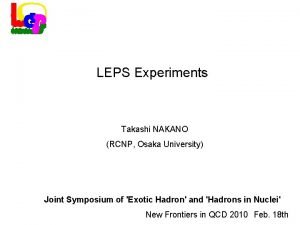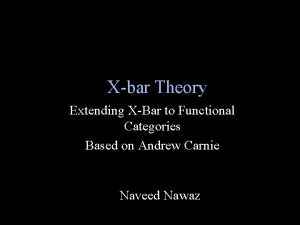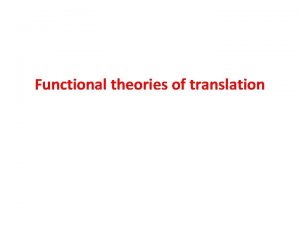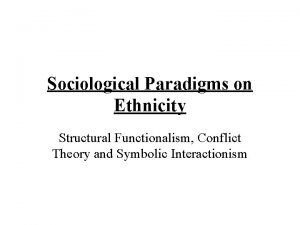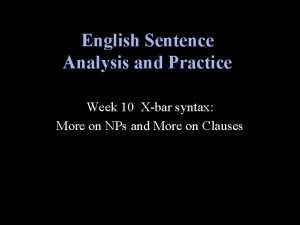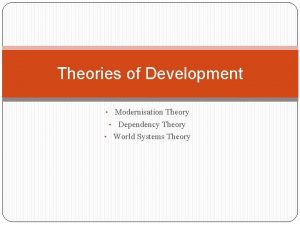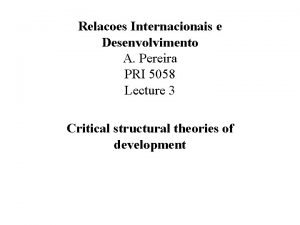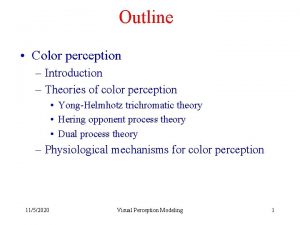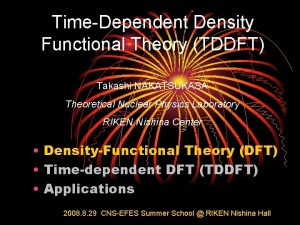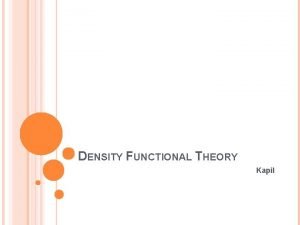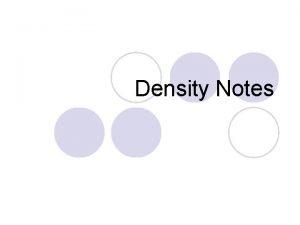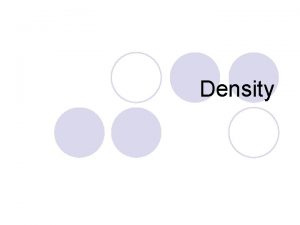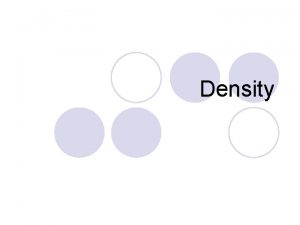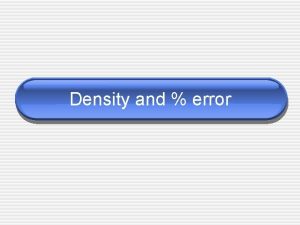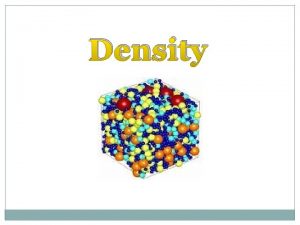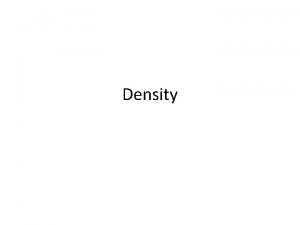TimeDependent Density Functional Theory TDDFT part2 Takashi NAKATSUKASA



















![50 σ [ mb ] 16 O Leistenschneider et al, PRL 86 (2001) 5442 50 σ [ mb ] 16 O Leistenschneider et al, PRL 86 (2001) 5442](https://slidetodoc.com/presentation_image_h/18dd2de7f779337b6b2e96b54aac0e9d/image-20.jpg)
![18 O 16 O Prolate 10 20 30 Ex [ Me. V ] 40 18 O 16 O Prolate 10 20 30 Ex [ Me. V ] 40](https://slidetodoc.com/presentation_image_h/18dd2de7f779337b6b2e96b54aac0e9d/image-21.jpg)
![10 20 24 Mg 26 Mg Prolate Triaxial 30 Ex [ Me. V ] 10 20 24 Mg 26 Mg Prolate Triaxial 30 Ex [ Me. V ]](https://slidetodoc.com/presentation_image_h/18dd2de7f779337b6b2e96b54aac0e9d/image-22.jpg)
![28 Si 30 Si Oblate 10 20 30 Ex [ Me. V ] 40 28 Si 30 Si Oblate 10 20 30 Ex [ Me. V ] 40](https://slidetodoc.com/presentation_image_h/18dd2de7f779337b6b2e96b54aac0e9d/image-23.jpg)












- Slides: 35

Time-Dependent Density Functional Theory (TDDFT) part-2 Takashi NAKATSUKASA Theoretical Nuclear Physics Laboratory RIKEN Nishina Center • Density-Functional Theory (DFT) • Time-dependent DFT (TDDFT) • Applications 2008. 8. 30 CNS-EFES Summer School @ RIKEN Nishina Hall

Time-dependent HK theorem First theorem Runge & Gross (1984) One-to-one mapping between time-dependent density ρ(r, t) and time-dependent potential v(r, t) except for a constant shift of the potential Condition for the external potential: Possibility of the Taylor expansion around finite time t 0 The initial state is arbitrary. This condition allows an impulse potential, but forbids adiabatic switch-on.

Schrödinger equation: Current density follows the equation (1) Different potentials, v(r, t) , v’(r, t), make time evolution from the same initial state into Ψ(t)、Ψ’(t) Continuity eq.

Problem: Two external potentials are different, when their expansion has different coefficients at a certain order Using eq. (1), show

Second theorem The universal density functional exists, and the variational principle determines the time evolution. From the first theorem, we have ρ(r, t) ↔Ψ(t). Thus, the variation of the following function determines ρ(r, t). The universal functional is determined. v-representative density is assumed.

Time-dependent KS theory Assuming non-interacting v-representability Time-dependent Kohn-Sham (TDKS) equation Solving the TDKS equation, in principle, we can obtain the exact time evolution of many-body systems. The functional depends on ρ(r, t) and the initial state Ψ 0.

Time-dependent quantities → Information on excited states Energy projection Finite time period → Finite energy resolution

Time Domain Energy Domain Basic equations • Time-dep. Schroedinger eq. • Time-dep. Kohn-Sham eq. Basic equations • Time-indep. Schroedinger eq. • Static Kohn-Sham eq. • dx/dt = Ax • Ax=ax (Eigenvalue problem) • Ax=b (Linear equation) Energy resolution ΔE〜ћ/T All energies Energy resolution ΔE〜 0 A single energy point Boundary Condition • Approximate boundary condition • Easy for complex systems Boundary condition • Exact scattering boundary condition is possible • Difficult for complex systems

Photoabsorption cross section of rare-gas atoms Zangwill & Soven, PRA 21 (1980) 1561

TDHF(TDDFT) calculation in 3 D real space H. Flocard, S. E. Koonin, M. S. Weiss, Phys. Rev. 17(1978)1682.

3 D lattice space calculation Application of the nuclear Skyrme-TDHF technique to molecular systems Local density approximation (except for Hartree term) →Appropriate for coordinate-space representation Kinetic energy is estimated with the finite difference method

Real-space TDDFT calculations Time-Dependent Kohn-Sham equation 3 D space is discretized in lattice Each Kohn-Sham orbital: N : Number of particles Mr : Number of mesh points y Mt : Number of time slices K. Yabana, G. F. Bertsch, Phys. Rev. B 54, 4484 (1996). T. Nakatsukasa, K. Yabana, J. Chem. Phys. 114, 2550 (2001). X

Calculation of time evolution Time evolution is calculated by the finite-order Taylor expansion Violation of the unitarity is negligible if the time step is small enough: The maximum (single-particle) eigenenergy in the model space

Real-time calculation of response functions 1. Weak instantaneous external perturbation 2. Calculate time evolution of 3. Fourier transform to energy domain ω [ Me. V ]

Real-time dynamics of electrons in photoabsorption of molecules 1. External perturbation t=0 2. Time evolution of dipole moment E at t=0 Ethylene molecule

Comparison with measurement (linear optical absorption) TDDFT accurately describe optical absorption Dynamical screening effect is significant PZ+LB 94 with Dynamical screening without TDDFT Exp Without dynamical screening (frozen Hamiltonian) T. Nakatsukasa, K. Yabana, J. Chem. Phys. 114(2001)2550. -- - - ++ + ++

Photoabsorption cross section in C 3 H 6 isomer molecules Nakatsukasa & Yabana, Chem. Phys. Lett. 374 (2003) 613. • TDLDA cal with LB 94 in 3 D real space • 33401 lattice points (r < 6 Å) Cross section [ Mb ] • Isomer effects can be understood in terms of symmetry and antiscreening effects on bound-to-continuum excitations. Photon energy [ e. V ]

Nuclear response function Dynamics of low-lying modes and giant resonances Skyrme functional is local in coordinate space → Real-space calculation Derivatives are estimated by the finite difference method.

Skyrme TDHF in real space Time-dependent Hartree-Fock equation 3 D space is discretized in lattice Single-particle orbital: N: Number of particles y [ fm ] Mr: Number of mesh points Mt: Number of time slices Spatial mesh size is about 1 fm. Time step is about 0. 2 fm/c Nakatsukasa, Yabana, Phys. Rev. C 71 (2005) 024301 X [ fm ]
![50 σ mb 16 O Leistenschneider et al PRL 86 2001 5442 50 σ [ mb ] 16 O Leistenschneider et al, PRL 86 (2001) 5442](https://slidetodoc.com/presentation_image_h/18dd2de7f779337b6b2e96b54aac0e9d/image-20.jpg)
50 σ [ mb ] 16 O Leistenschneider et al, PRL 86 (2001) 5442 22 O Berman & Fultz, RMP 47 (1975) 713 σ [ mb ] 0 50 28 O 20 40 SGII parameter set σ [ mb ] 0 50 0 E 1 resonances 16, 22, 28 O in 0 0 20 E [ Me. V ] Г=0. 5 Me. V 40 Note: Continnum is NOT taken into account !
![18 O 16 O Prolate 10 20 30 Ex Me V 40 18 O 16 O Prolate 10 20 30 Ex [ Me. V ] 40](https://slidetodoc.com/presentation_image_h/18dd2de7f779337b6b2e96b54aac0e9d/image-21.jpg)
18 O 16 O Prolate 10 20 30 Ex [ Me. V ] 40
![10 20 24 Mg 26 Mg Prolate Triaxial 30 Ex Me V 10 20 24 Mg 26 Mg Prolate Triaxial 30 Ex [ Me. V ]](https://slidetodoc.com/presentation_image_h/18dd2de7f779337b6b2e96b54aac0e9d/image-22.jpg)
10 20 24 Mg 26 Mg Prolate Triaxial 30 Ex [ Me. V ] 40 10 20 30 Ex [ Me. V ] 40
![28 Si 30 Si Oblate 10 20 30 Ex Me V 40 28 Si 30 Si Oblate 10 20 30 Ex [ Me. V ] 40](https://slidetodoc.com/presentation_image_h/18dd2de7f779337b6b2e96b54aac0e9d/image-23.jpg)
28 Si 30 Si Oblate 10 20 30 Ex [ Me. V ] 40 40

44 Ca Prolate 48 Ca 40 Ca 10 20 30 Ex [ Me. V ] 10 10 20 30 Ex [ Me. V ] 40

Giant dipole resonance in stable and unstable nuclei p Classical image of GDR n

Choice of external fields

Neutrons Time-dep. transition density δρ> 0 δρ< 0 Protons 16 O

Skyrme HF for 8, 14 Be ∆r=12 fm R=8 fm 8 Be Adaptive coordinate y z x 14 Be x z x Neutron Proton S. Takami, K. Yabana, and K. Ikeda, Prog. Theor. Phys. 94 (1995) 1011.

8 Be Solid: K=1 Dashed: K=0 14 Be

14 Be Peak at E〜 6 Me. V

Picture of pygmy dipole resonance Halo neutrons Protons Neutrons n Core p Ground state n Low-energy resonance

Nuclear Data by TDDFT Simulation T. Inakura, T. N. , K. Yabana 1. Create all possible nuclei on computer 2. Investigate properties of nuclei which are impossible to synthesize experimentally. n 3. Application to nuclear astrophysics, basic data for nuclear reactor simulation, etc. Ground-state properties Photoabsorption cross sections n TDDFT Kohn-Sham equation Real-time response of neutron-rich nuclei

Non-linear regime (Large-amplitude dynamics) N. Hinohara, T. N. , M. Matsuo, K. Matsuyanagi Quantum tunneling dynamics in nuclear shape-coexistence phenomena in 68 Se Cal Exp

Summary (Time-dependent) Density functional theory assures the existence of functional to reproduce exact manybody dynamics. Any physical observable is a functional of density. Current functionals rely on the Kohn-Sham scheme Applications are wide in variety; Nuclei, Atoms, molecules, solids, … We show TDDFT calculations of photonuclear cross sections using a Skyrme functional. Toward theoretical nuclear data table

Postdoctoral opportunity at RIKEN http: //www. riken. jp/ Click on “Carrier Opportunity” FPR (Foreign Postdoctoral Researcher)
 Takashi yagisawa
Takashi yagisawa Takashi nakamura
Takashi nakamura Takashi murakami biografie
Takashi murakami biografie Disadvantages of ffr
Disadvantages of ffr Reverse image search
Reverse image search Density functional theory
Density functional theory What is the difference between density and relative density
What is the difference between density and relative density Fcc 111 linear density
Fcc 111 linear density Physiological density
Physiological density Linear density and planar density
Linear density and planar density Nda full dac
Nda full dac What is physiological density ap human geography
What is physiological density ap human geography Functional and non functional space maintainer
Functional and non functional space maintainer Functional and non functional plasma enzymes
Functional and non functional plasma enzymes Enzymes
Enzymes Functional and non functional
Functional and non functional Sfg grammar
Sfg grammar Xbar theory
Xbar theory Holz manttari translational action
Holz manttari translational action Functionalism definition sociology
Functionalism definition sociology Principles of structural functionalism
Principles of structural functionalism Forward rotation of maxilla
Forward rotation of maxilla Sicher sutural theory
Sicher sutural theory X bar theory exercises with answers
X bar theory exercises with answers A remarkable turnaround case study
A remarkable turnaround case study Continental drift theory and plate tectonics theory
Continental drift theory and plate tectonics theory Dependency theory
Dependency theory Opponent process theory vs trichromatic theory
Opponent process theory vs trichromatic theory Modernization theory vs dependency theory
Modernization theory vs dependency theory Continental drift vs plate tectonics theory
Continental drift vs plate tectonics theory Dual-process theory
Dual-process theory Neoclassical organization theory
Neoclassical organization theory Theory x and theory y of motivation
Theory x and theory y of motivation Hawthorne theory of motivation
Hawthorne theory of motivation Continuity theory vs activity theory
Continuity theory vs activity theory Adulthood introduction
Adulthood introduction




